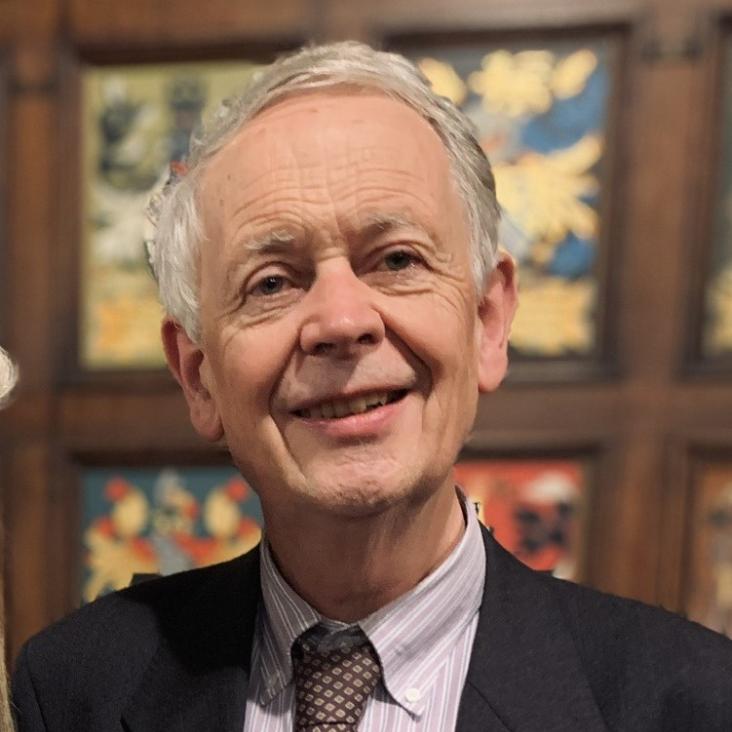Distribution functions for the Milky Way
ArXiv 0910.1512 (2009)
Abstract:
Analytic distribution functions (DFs) for the Galactic disc are discussed. The DFs depend on action variables and their predictions for observable quantities are explored under the assumption that the motion perpendicular to the Galactic plane is adiabatically invariant during motion within the plane. A promising family of DFs is defined that has several adjustable parameters. A standard DF is identified by adjusting these parameters to optimise fits to the stellar density in the column above the Sun, and to the velocity distribution of nearby stars and stars ~1 kpc above the Sun. The optimum parameters imply a radial structure for the disc which is consistent with photometric studies of the Milky Way and similar galaxies, and that 20 per cent of the disc's luminosity comes from thick disc. The fits suggest that the value of the V component of the Sun's peculiar velocity should be revised upwards from 5.2 km/s to ~11 km/s. It is argued that the standard DF provides a significantly more reliable way to divide solar-neighbourhood stars into members of the thin and thick discs than is currently used. The standard DF provides predictions for surveys of stars observed at any distance from the Sun. It is anticipated that DFs of the type discussed here will provide useful starting points for much more sophisticated chemo-dynamical models of the Milky Way.The dangers of deprojection of proper motions
ArXiv 0909.1679 (2009)
Abstract:
We re-examine the method of deprojection of proper motions, which has been used for finding the velocity ellipsoid of stars in the nearby Galaxy. This method is only legitimate if the lines of sight to the individual stars are uncorrelated with the stars' velocities. Very simple models are used to show that spurious results similar to ones recently reported are obtained when velocity dispersion decreases with galactocentric radius in the expected way. A scheme that compensates for this bias is proposed.Fitting orbits to tidal streams with proper motions
ArXiv 0908.2081 (2009)
Abstract:
The Galaxy's stellar halo seems to be a tangle of disrupted systems that have been tidally stretched out into streams. Each stream approximately delineates an orbit in the Galactic force-field. In the first paper in this series we showed that all six phase-space coordinates of each point on an orbit can be reconstructed from the orbit's path across the sky and measurements of the line-of-sight velocity along the orbit. In this paper we complement this finding by showing that the orbit can also be reconstructed if we know proper motions along the orbit rather than the radial velocities. We also show that accurate proper motions of stream stars would enable distances to be determined to points on the stream that are independent of any assumption about the Galaxy's gravitational potential. Such "Galactic parallaxes" would be as fundamental as conventional trigonometric parallaxes, but measureable to distances ~70 times further.RAVE spectroscopy of luminous blue variables in the Large Magellanic Cloud
Astronomy and Astrophysics 503:2 (2009) 511-520
Abstract:
Context. The RAVE spectroscopic survey for galactic structure and evolution obtains 8400-8800 Å spectra at 7500 resolving power at the UK Schmidt Telescope using the 6dF multi-fiber positioner. More than 300 000 9 ≤ I C ≤ 12 and |b|≥ 25° southern stars have been observed to date. Aims. This paper presents the first intrinsic examination of stellar spectra from the RAVE survey, aimed at evaluating their diagnostic potential for peculiar stars and at contributing to the general understanding of luminous blue variables (LBVs). Methods. We used the multi-epoch spectra for all seven LBVs observed, between 2005 and 2008, in the Large Magellanic Cloud (LMC) by the RAVE survey. Results. We demonstrate that RAVE spectra possess significant diagnostic potential when applied to peculiar stars and, in particular, LBVs. The behaviour of the radial velocities for both emission and absorption lines, and the spectral changes between outburst and quiescence states are described and found to agree with evidence gathered at more conventional wavelengths. The wind outflow signatures and their variability are investigated, with multi-components detected in S Doradus. Photoionisation modelling of the rich emission line spectrum of R 127 shows evidence of a massive detached ionised shell that was ejected during the 1982-2000 outburst. Surface inhomogeneities in the nuclear-processed material, brought to the surface by heavy mass loss, could have been observed in S Doradus, even if alternative explanations are possible. We also detect the transition from quiescence to outburst state in R 71. Finally, our spectrum of R 84 offers one of the clearest views of its cool companion. © ESO 2009.Virtual experiences, physical behaviors: The effect of presence on imitation of an eating avatar
Presence: Teleoperators and Virtual Environments 18:4 (2009) 294-303


